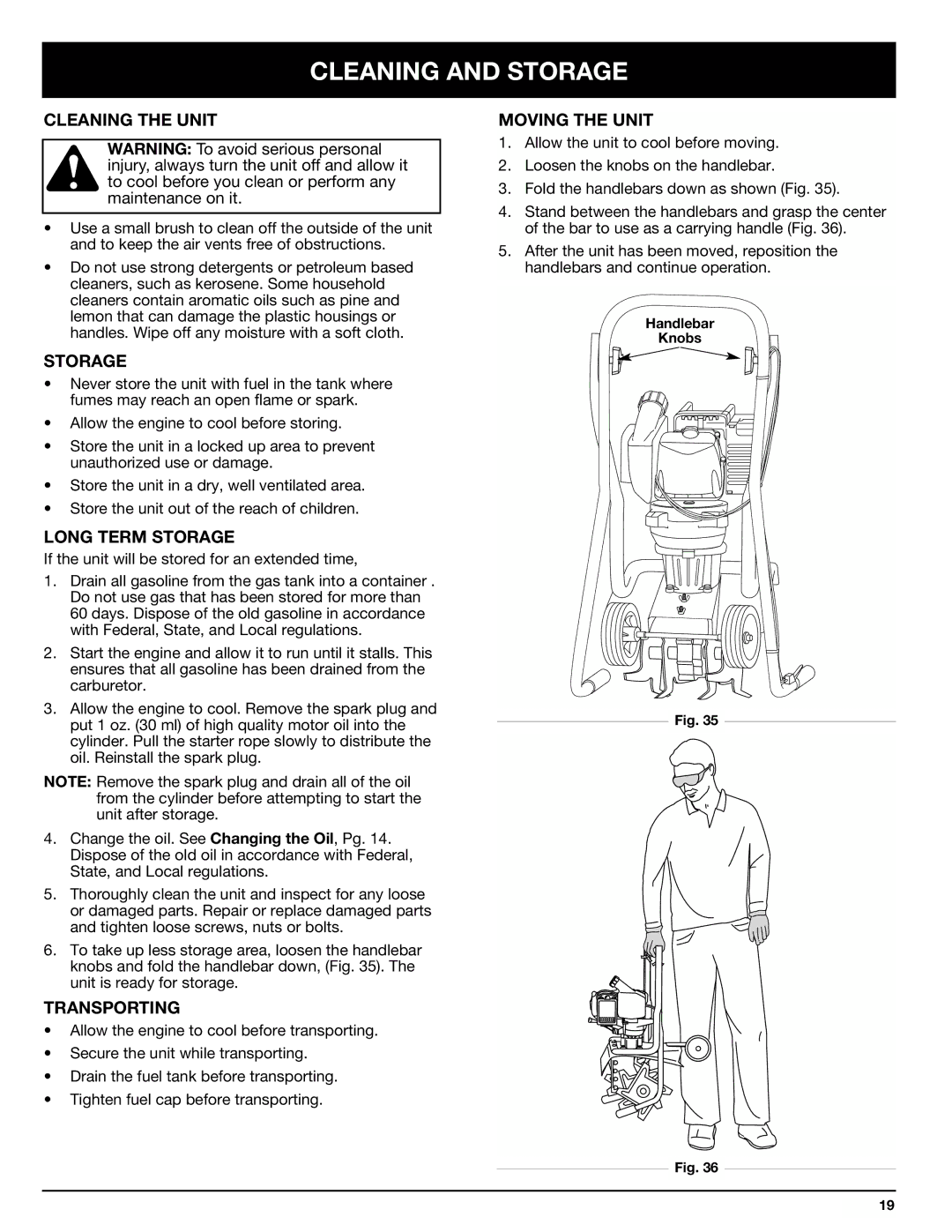
CLEANING AND STORAGE
CLEANING THE UNIT
WARNING: To avoid serious personal injury, always turn the unit off and allow it to cool before you clean or perform any maintenance on it.
•Use a small brush to clean off the outside of the unit and to keep the air vents free of obstructions.
•Do not use strong detergents or petroleum based cleaners, such as kerosene. Some household cleaners contain aromatic oils such as pine and lemon that can damage the plastic housings or handles. Wipe off any moisture with a soft cloth.
STORAGE
•Never store the unit with fuel in the tank where fumes may reach an open flame or spark.
•Allow the engine to cool before storing.
•Store the unit in a locked up area to prevent unauthorized use or damage.
•Store the unit in a dry, well ventilated area.
•Store the unit out of the reach of children.
LONG TERM STORAGE
If the unit will be stored for an extended time,
1.Drain all gasoline from the gas tank into a container . Do not use gas that has been stored for more than 60 days. Dispose of the old gasoline in accordance with Federal, State, and Local regulations.
2.Start the engine and allow it to run until it stalls. This ensures that all gasoline has been drained from the carburetor.
3.Allow the engine to cool. Remove the spark plug and put 1 oz. (30 ml) of high quality motor oil into the cylinder. Pull the starter rope slowly to distribute the oil. Reinstall the spark plug.
NOTE: Remove the spark plug and drain all of the oil from the cylinder before attempting to start the unit after storage.
4.Change the oil. See Changing the Oil, Pg. 14. Dispose of the old oil in accordance with Federal, State, and Local regulations.
5.Thoroughly clean the unit and inspect for any loose or damaged parts. Repair or replace damaged parts and tighten loose screws, nuts or bolts.
6.To take up less storage area, loosen the handlebar knobs and fold the handlebar down, (Fig. 35). The unit is ready for storage.
TRANSPORTING
•Allow the engine to cool before transporting.
•Secure the unit while transporting.
•Drain the fuel tank before transporting.
•Tighten fuel cap before transporting.
MOVING THE UNIT
1.Allow the unit to cool before moving.
2.Loosen the knobs on the handlebar.
3.Fold the handlebars down as shown (Fig. 35).
4.Stand between the handlebars and grasp the center of the bar to use as a carrying handle (Fig. 36).
5.After the unit has been moved, reposition the handlebars and continue operation.
Handlebar
Knobs
Fig. 35
Fig. 36
19
